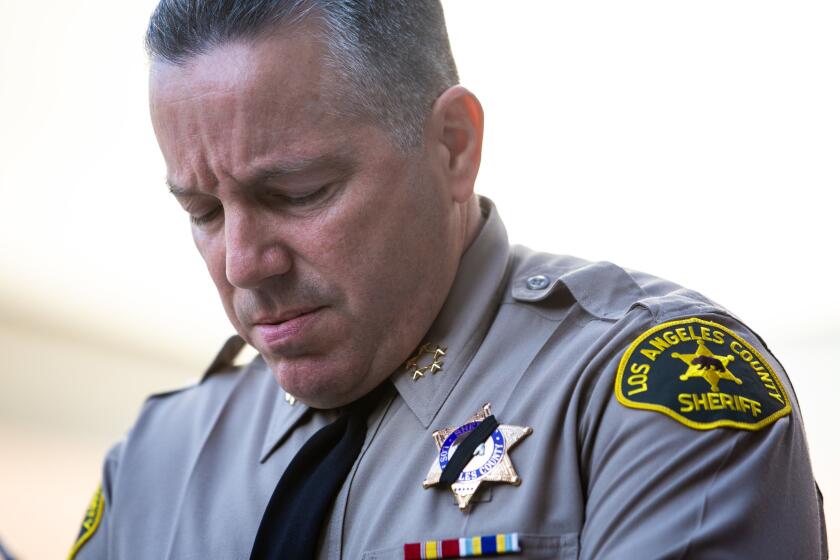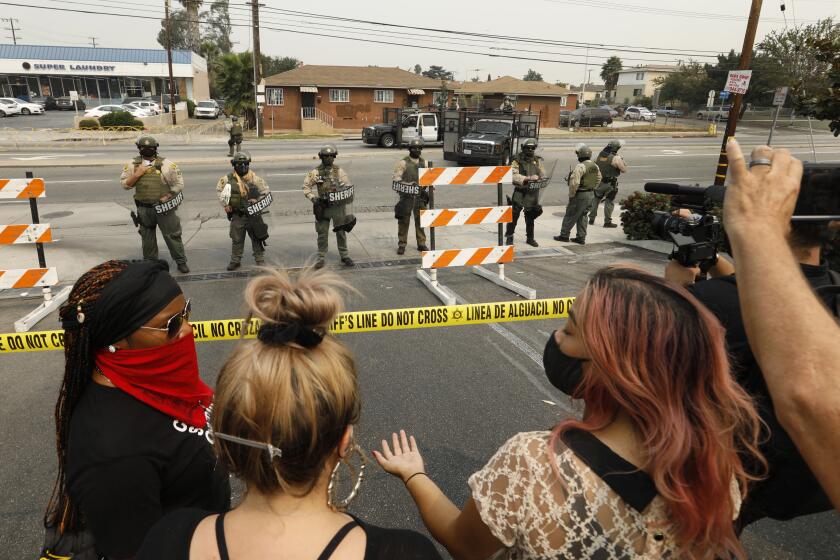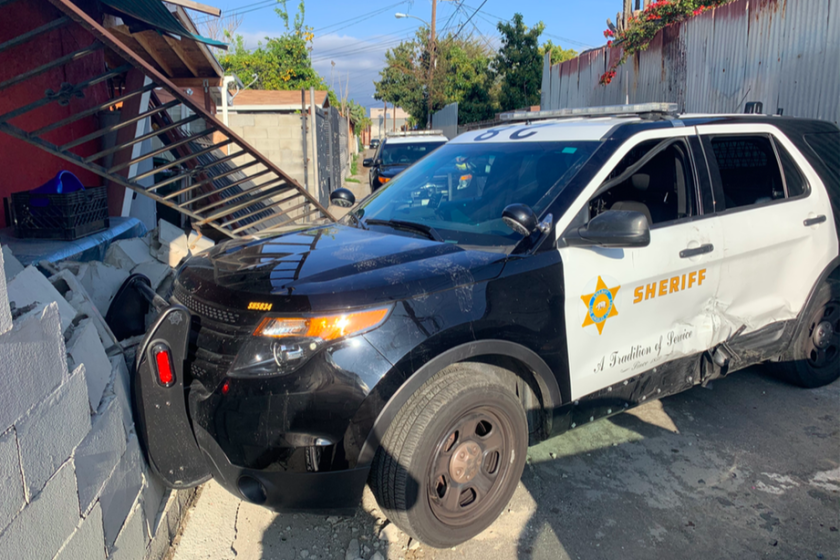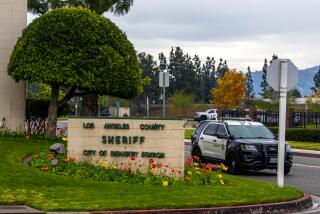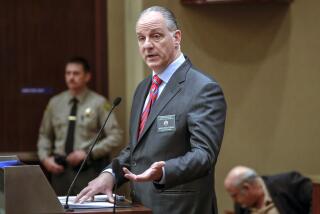L.A. County sheriff refuses to name deputies who open fire, defying state’s high court
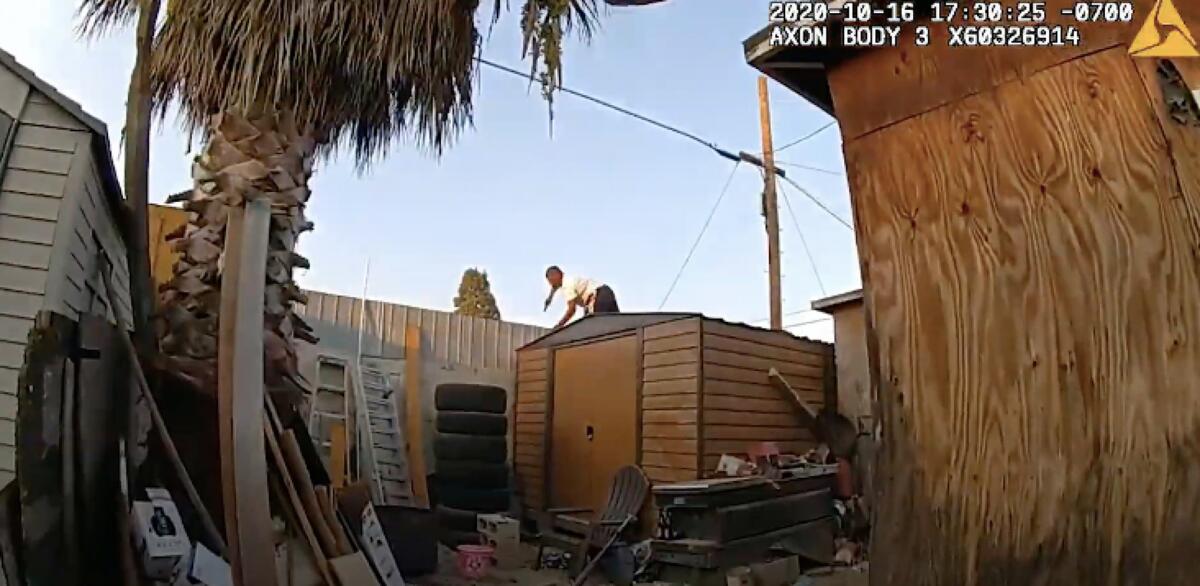
After his son was shot and killed in October, Fred Williams Jr. asked the Los Angeles County Sheriff’s Department for the name of the deputy who pulled the trigger.
But sheriff’s officials refused to identify the deputy, making it nearly impossible for Williams to learn anything about him. Had he been in prior shootings? Was there a history of abuse?
“That’s exactly why me and my attorneys are pressing for the officer’s name: So we can dig into his background,” Williams said.
The secrecy Williams encountered is standard within the Sheriff’s Department, which routinely rejects requests from relatives of people who are shot, journalists and other members of the public to learn the names of deputies who open fire while on duty.
The practice, which Sheriff Alex Villanueva has staunchly upheld since he took office in late 2018, runs afoul of a state Supreme Court ruling that generally requires such disclosures be made, experts say.
It also makes the Sheriff’s Department an outlier among some of California’s largest law enforcement agencies. A Los Angeles Times review found they readily make the names of officers and deputies public following shootings.
The Sheriff Department’s secrecy has come under increased scrutiny over the last year as widespread anger over high-profile police killings around the U.S. has given rise to demands for greater transparency by law enforcement. For departments looking to quell anger in the aftermath of a shooting, it has become a basic first move for many to release the names of the officers who opened fire.
The use of deadly force is the most consequential and controversial of police powers, and withholding the names of deputies, advocates of police reform say, leaves the public unable to properly examine how the Sheriff’s Department wields it.
“It just leaves a gaping hole in the public’s understanding of these crucial events,” said David Snyder, executive director of the First Amendment Coalition. “The fact that they’re withholding these names in what appears to be a blanket fashion suggests that either they don’t understand the law or they’re intentionally avoiding their obligations under the law.”
The other major police agency in Los Angeles County, the Los Angeles Police Department, as well as large agencies across the state, have not withheld the names of officers who fire their weapons. Some proactively publish the officers’ identities in press releases and online shortly after each shooting, while others release names when asked. Villanueva has argued that releasing the names of deputies places their safety at risk, even though other agencies have done so without problems.
The LAPD, for example, publicly identified officers in each of the 88 shootings that occurred between 2018 and 2020, according to The Times’ review. In San Diego, police released the names of officers in all 20 of the city’s police shootings during the same time period, The Times found.
And in all 12 of its shootings during the three-year period, the San Francisco Police Department adhered to a policy that requires the names of officers to be published on its website, in a social media post and via press release within 10 days of a shooting or other incident involving serious force.
The Oakland and Bakersfield police departments also released the names of each officer who opened fire while on duty in that three-year time frame, records show. The Kern County Sheriff’s Office made public the names of deputies involved in 16 shootings from that period. In one shooting in which seven deputies fired weapons, the department chose to withhold three of their names after concluding that identifying them would “threaten officer safety and effectiveness.” The office declined to elaborate.
In Sacramento, police withheld the names of deputies in just one shooting from that period after a judge imposed a gag order in a related criminal case.
L.A. County Sheriff Alex Villanueva has touted his department’s transparency and progressive policies, but many records are not forthcoming.
While Villanueva frequently boasts that under his leadership the Sheriff’s Department is “more transparent than ever before,” the public can go years after a shooting without knowing the names of deputies who fired weapons. The Times found no shootings between 2018 and 2020 in which the department released the names of deputies on its own accord.
When The Times filed a lawsuit last year over the agency’s failure to abide by a police transparency law, the Sheriff’s Department belatedly began disclosing information about shootings, including the names of deputies. It so far has identified deputies in just more than half of the 22 shootings in 2018, one of 28 shootings in 2019 and none of the 33 shootings last year.
Along with routinely asking for deputies’ names following shootings, The Times filed a records request in December for the names of every deputy who fired at someone last year. The Sheriff’s Department has not yet named any deputies.
Humberto Guizar, an attorney who has sued the agency over police killings, said that when he submits such requests, sheriff’s officials commonly rebuff them, leaving Guizar to wait until county lawyers are forced to turn over deputies’ names as part of a lawsuit. In federal court, where disclosure requirements are more strict, Guizar said sheriff’s officials “sandbag” him and other attorneys by naming every deputy who responded to the scene of a shooting without identifying which ones fired their weapons.
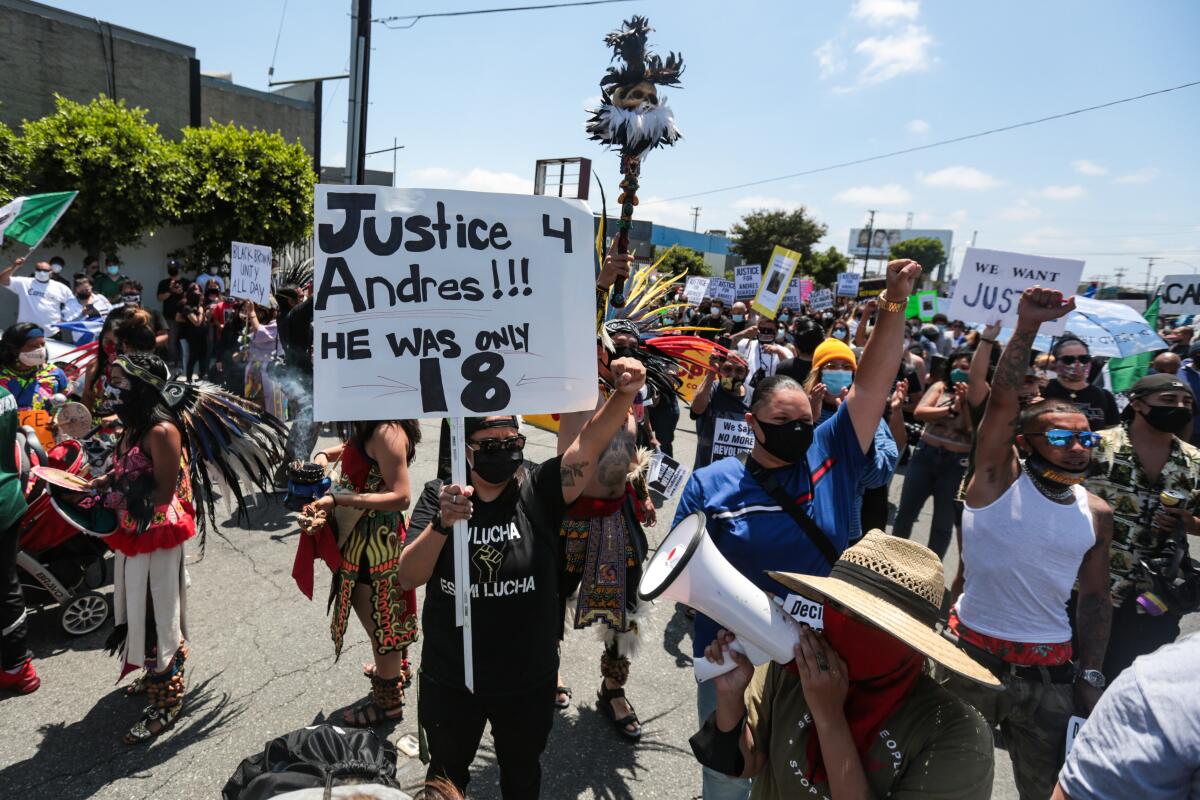
Asked about the practice of withholding names during a live broadcast on Facebook last month, Villanueva reiterated the department’s frequently used claim that deputies in shootings face threats to their safety and cited the controversial killing of 18-year-old Andres Guardado by Deputy Miguel Vega in Gardena last June. The shooting triggered large protests, including at the deputy’s home after his name was published by The Times.
“We had people showed up at their house, vandalize their house and made quite a spectacle of themselves,” Villanueva said during the Facebook Live broadcast. “Those are credible threats and they’re continuous.”
L.A. County Sheriff Alex Villanueva said deputies will replace name tags with badge numbers at protests because they’ve been harassed and doxxed.
Villanueva did not respond to a follow-up question from The Times about whether he believes threats against Vega justify withholding the names of all deputies who fire their weapons. A spokesman for the department said a deputy’s name is withheld “when a credible threat exists.”
In his comments, the sheriff also said deputies’ names are made public when the L.A. County district attorney’s office completes its review of each case and names the deputies in memos, which the Sheriff’s Department links to on its website. Those reports, however, are completed many months or years after a shooting.
“All the names are revealed at that point,” Villanueva said. “And I think that’s the proper way to do it.”
The sheriff did not explain why, if deputies face ongoing threats, he believes it is appropriate for their names to be released by the district attorney’s office or anyone else.
On the Facebook broadcast, Villanueva finished his response and prepared to answer another question, but then appeared to read a note passed to him. He then backtracked and said that the Sheriff Department’s practice of not releasing deputies’ names is under review.
The California Supreme Court found the names of deputies who shoot cannot be kept secret in most cases. The court’s 2014 ruling came in a case that arose after The Times attempted to obtain the names of Long Beach police officers who killed a man after mistaking a garden hose nozzle he was holding for a gun.
The Long Beach Police Officers Assn. tried to block the disclosure, citing the confidentiality of officers’ personnel records and a need to protect the officers’ safety. The state’s high court ruled police agencies cannot use general concerns about officer safety to justify withholding names and, barring a specific threat, must make deputies’ names public.
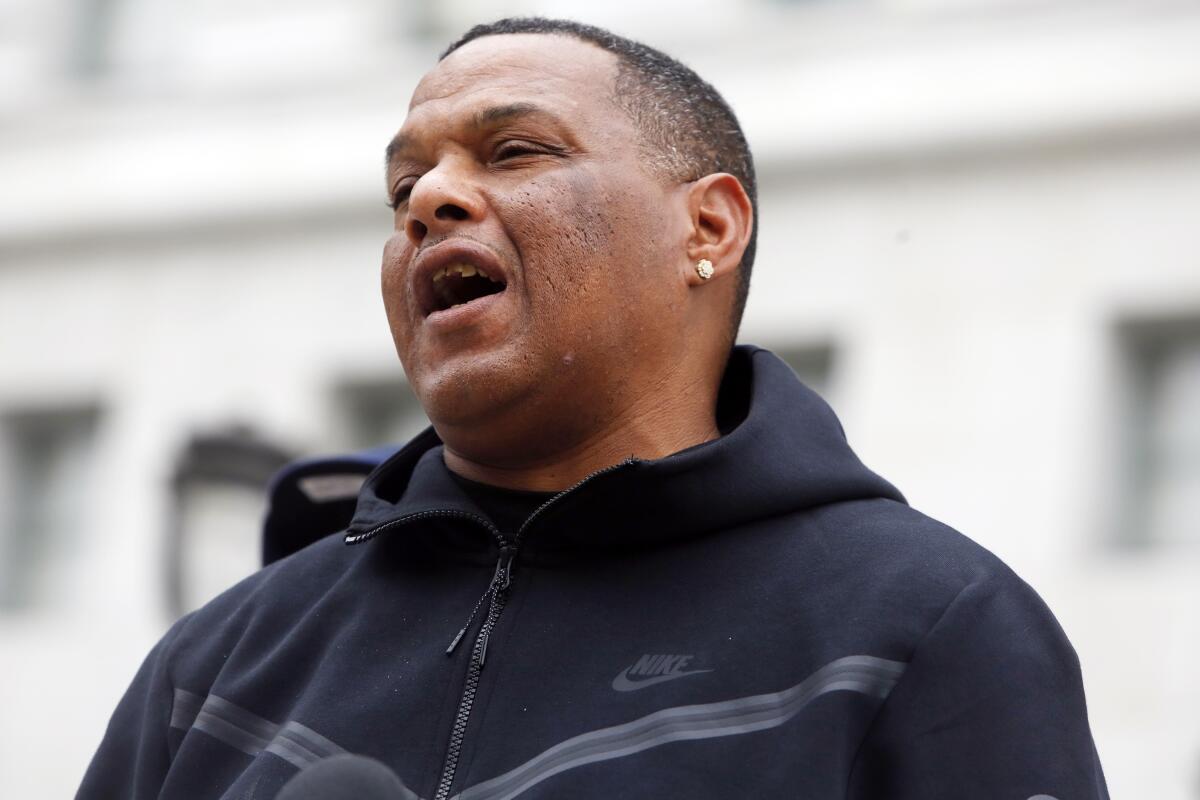
Melanie Ochoa, director of police practices for the American Civil Liberties Union in Southern California, said it strained credulity to think L.A. County sheriff’s deputies routinely receive credible threats when other major police agencies in the same region have released the names of nearly every officer involved in a shooting since 2018 without incident.
Ochoa called on the county Board of Supervisors to take more firm action in response to the department’s refusal to name deputies.
“When you have families whose loved ones have been killed by deputy violence and they’re just asking for the names of the person involved, that’s such a minor ask,” Ochoa said. “And for them to be constantly rejected in that, when the law is on their side, is ridiculous.”
L.A. County Inspector General Max Huntsman, whose office serves as a watchdog over the Sheriff’s Department, said Villanueva punting the release of deputies’ names to the district attorney is “not a substitute for timely compliance by law enforcement agencies.”
“The Supreme Court rule is unambiguous that the names of peace officers in shootings should generally be made public. LAPD obeys, but LASD does not,” he said.
Isaac Asberry, a former prison guard who now runs a nonprofit for teens in Compton, said he closely tracks shootings by deputies as part of his job. Repeated denials from the Sheriff’s Department for names of deputies in specific shootings prompted him to complain in a letter to the U.S. attorney’s office, he said.
“They have the reports; they know who shot who,” he said.
The identities of Vega and his partner, Chris Hernandez, were only made public when sources identified them to The Times days after the shooting. Knowing their names, The Times was able to discover that the two deputies were involved in another incident in which a skateboarder alleged that the deputies had kidnapped him and threatened him before Vega crashed his patrol SUV in an alley.
The Los Angeles County Sheriff’s deputies involved in a controversial shooting are under investigation for an encounter with a skateboarder, who accuses the deputies of lying to cover up misconduct.
Both Vega and Hernandez were relieved of duty in December pending the outcome of a criminal investigation into the incident.
Fred Williams Jr., meanwhile, has remained in the dark about who killed his son. Despite filing a wrongful-death lawsuit against the Sheriff’s Department, he still hasn’t been told the name of the deputy, he said.
The Sheriff’s Department has blocked the release of the name elsewhere as well. Three months after Fred Williams III was killed, the coroner’s office held an inquest into the incident. A Sheriff’s Department sergeant submitted a declaration at the proceeding, saying the agency was investigating a social media threat against the deputy. The hearing officer agreed to keep the name of the deputy involved under seal.
“Even in the midst of what’s going on nationally they’re still being resistant,” said the elder Williams’ attorney, Brian Witzer. “What kind of confidence can the public have when the first step is secrecy?”
Fred Williams III was killed during a foot pursuit in Willowbrook. It was, according to sheriff’s officials, the first deputy shooting captured on Sheriff’s Department-issued body cameras.
The footage shows Williams, 25, on top of a garden shed, holding a gun while jumping over a fence, before he was shot. During the incident, the deputy broadcast over the radio that Williams “pointed 417 at me,” referring to the firearm.
More to Read
Start your day right
Sign up for Essential California for news, features and recommendations from the L.A. Times and beyond in your inbox six days a week.
You may occasionally receive promotional content from the Los Angeles Times.
